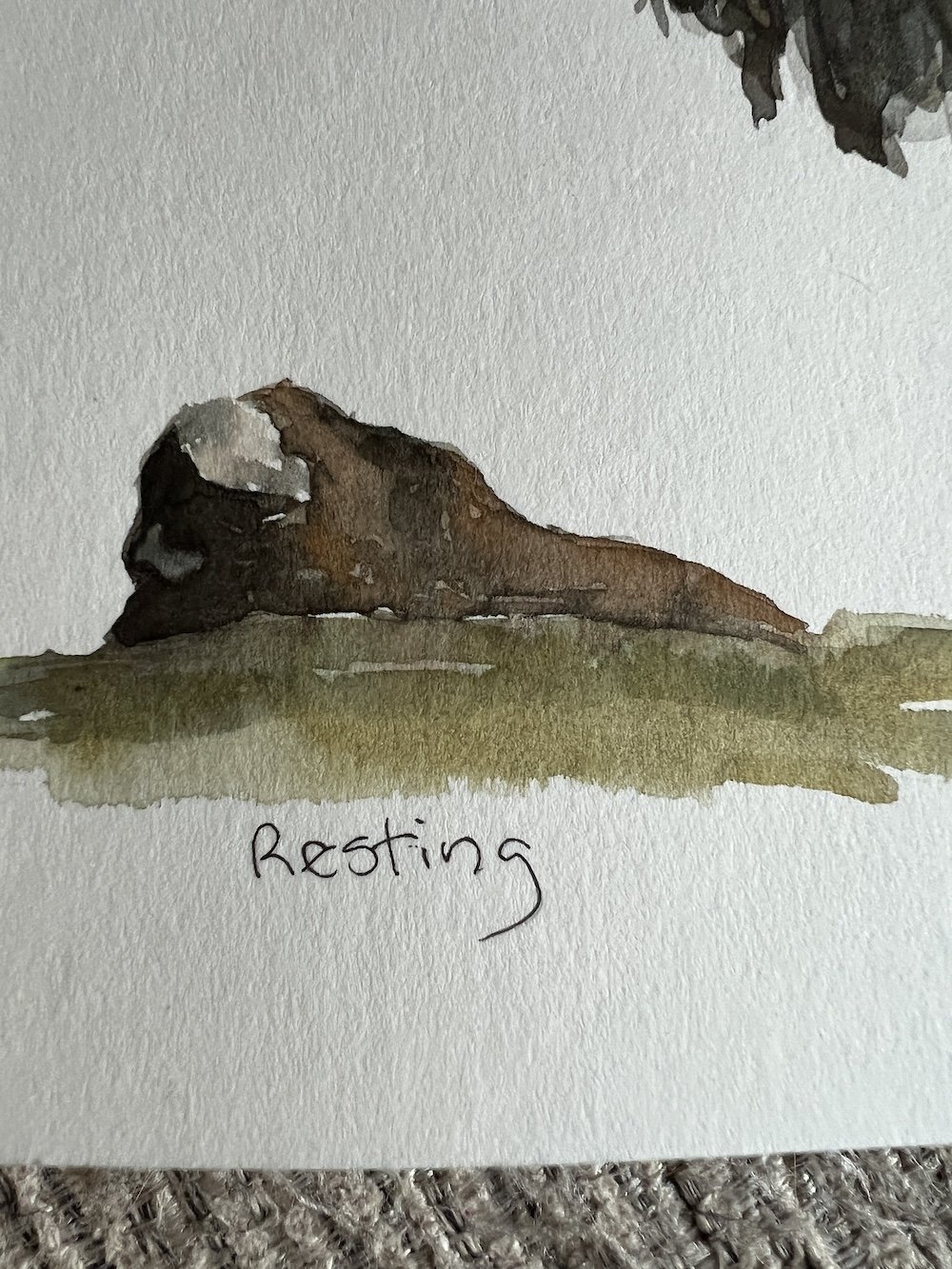North of the Arctic Circle
Reposted from my August 2023 newsletter, edited for this platform.
A long awaited Alaska adventure finally came around.
A road trip to the Arctic tundra, the top of Alaska, and the wildest weather getting there! Yeah, we saw some stuff, no biggie.
lol. WE SAW WILD MUSK OX!! The Inupiat name for Ovibos moschatus is Oomingmak
My husband stopped to ask some hunters what they were spotting. Caribou. They mentioned a small herd of Musk Ox down the road, perhaps part of a larger herd. There were three adults up on a ridge and one juvenile downslope from them.
It was cold, gray, and wet. The only place I could position myself to sketch was on the side of the Dalton Highway, known for fast-moving big-rigs transporting loads of fuel and supplies to and from the top of Alaska.
Making it more wiggy, the Dalton Highway is mostly a dirt road with small but perilous rocks which, when kicked up at high speed, will crack a windshield, or maybe my head.
Standing on the roadside was a bit nerve-wracking. Having ridden my bicycle across the U.S., I was well prepared for the distraction of trucks, weather, and ditches. But still...big rigs roaring by, rocks pelting the air...
I had maybe 20 minutes of pure bliss and concentration sketching this animal in its natural habitat. An exhilarating, incredible experience!
Standing in the tundra habitat, being with the Musk Ox, made me wonder what it's like to live outside in complete darkness for several months of the year.
The tundra is a tough place to exist. People and animals adapt to their environment, of course, but outside, shrouded in complete darkness for several months of the year in one of the harshest environments on earth? What might that feel like?
On our return from Deadhorse, which sits right next to Prudhoe Bay on the Arctic Ocean, the fog and clouds lifted across the tundra, allowing us to get a sense of the vast Arctic tundra, the distant horizon, and endless rolling contour.
Like most places in Alaska, you can hike pretty much anywhere you want. You do not have to follow marked trails. Tempting, right? To get out on foot and wander anywhere you want on the Arctic Tundra?
It's not that easy.
Tundra habitat is wet; water sitting atop permafrost. Most of the vegetation cover is a mix of mosses, berry plants, wildflowers, and lichens, arranged in squishy mounds called hummocks; thick with mosquitos; slogging rather than hiking.
Still want to walk across it?
We chose not to slog on this day. We relished in just "being" there; seeing the environment with our own eyes; experiencing the infamous Dalton Highway; witnessing the tundra; not just reading about these things.
Of course, the weather conditions didn't stop us from birding. Twenty species, of which three were lifers. Boom!
I have to go back. Meanwhile, here's a fun, 94 second look at the epic adventure.













